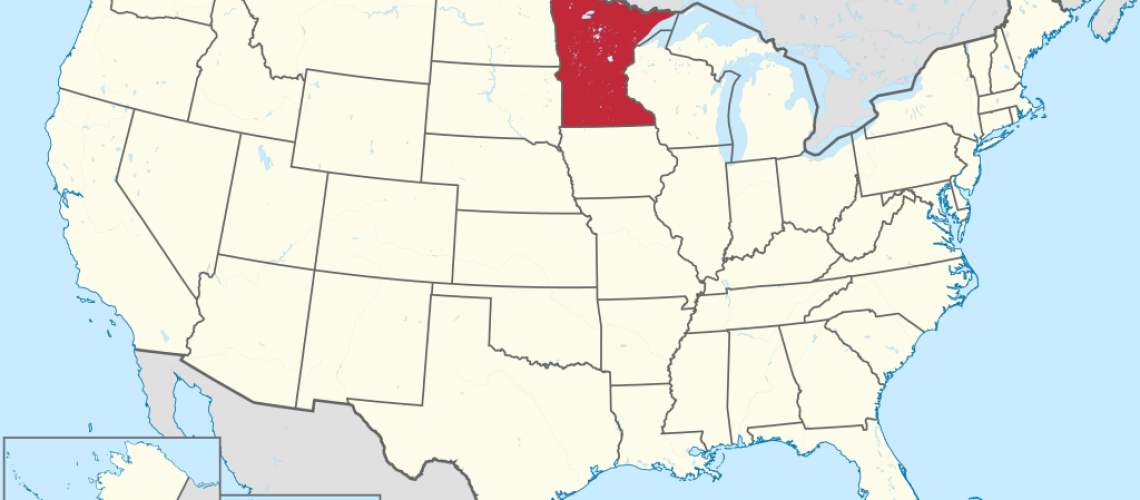The first in the series “Not Your Average Dream Home,” which delineates how the author chose the perfect plot of land in the U.S. that is most likely to be safe for the next few decades from the risks caused by human climate disasters.
Passionate about limiting climate collapse, I’ve worked in the energy transition, specifically in the solar industry, for a decade. But I always wanted my personal life to better reflect that commitment, specifically my home. So, after a decade of dreaming about living in a sustainable house, I’m now on my way to building one. During the next year, I will document this journey on pv magazine USA in a series called, “Not Your Average Dream Home,” which will include a wide variety of topics such as, designing with passivehaus elements, water recycling, energy production and management, and building materials. But before I can dive into those topics, I first needed to find a plot of land.
Since the climate is being rapidly changed, I was looking for a location that would be the safest, or maybe more accurately the least at risk from human-caused climate disasters over the next few decades. According to Core Logics’s Climate Change Catastrophe Report published in 2022, 1 in 10 homes (14.5 million) in the U.S. in the previous year were impacted by “natural” disasters, such as heat, drought, fire, flood, and storms, causing an estimated $56.92 billion in property damage.
This meant that I needed to eliminate the entire West due to drought and wildfires. Having lived in Colorado, I am well aware of the threat from the Colorado River drying up and not being able to provide enough water for the 40 million people who depend on it due to this historic and extended drought. I have also experienced summer, now known as wildfire season, in the mountains, when the smoke was so bad that I had to wear a mask outside and couldn’t open the windows to cool down the house at night since most places don’t have air conditioning. I had also gotten used to having a go-bag and an evacuation checklist in event of a forest fire.
The coastal regions were obviously off limits due to sea level rise, hurricanes and flooding. And I had to rule out the entire south due to heat. While states like Arizona, New Mexico and Texas suffered from record-breaking multiple consecutive 100+° days this summer, states like Florida, Alabama and Mississippi suffer from both heat and humidity. The combination of heat and humidity, known as the wet bulb temperature, when it comes to global warming is particularly deadly since it compromises our main cooling method, sweating. According to a study published back in 2020 in the journal Science Advances, heat and humidity in certain areas of the world were already testing the limits of human survivability. And despite the reaction by these GBN anchors, high wet bulb temperatures are incredibly deadly.
While I knew that I couldn’t completely escape the impacts of climate collapse (or the rising insurance costs and uninsurability that it is causing), there are a few areas that are considered the least risky in the continental U.S., such as a northern states in the Midwest and some areas close to the Canadian border in New England. And potentially, they may not have as fridged winters as they have in the past. But they are not without their own risk. The instability of the jet stream could cause more polar vortexes, and with them extreme snowfall and cold, as well as stronger tornados.
In the end, out of these very limited options, I landed on Minnesota, which has shown a commitment to fighting climate change. Earlier this year, Minnesota signed into law Senate bill SF 4, which established the ambitious goal of achieving 100% clean energy by 2040. In addition, SolarReviews, as published by pv magazine USA, ranked Minnesota #6 for solar due to its available tax credits, electricity prices, payback time, and more.
Even though I narrowed down the state, I still needed to find a plot of land that would fit my build. This was not as easy of a task as I had expected. There were several important considerations, such as level ground, land size, realistic budget, proximity to essential services, utility hookups (i.e. internet, electricity, water, etc.), zoning restrictions and more, that severely narrowed down my options. One particularly restrictive factor was avoiding home owner associations (HOAs) and other building limitations, that called for things like a 3,000 sq ft minimum build, a 3-car garage, or a certain type of building façade. All of which would have made the build that I was planning impossible. But after a year of looking, I finally found a piece of land where I can build not your average dream home. Stay tuned for the next steps of the journey of designing and planning a sustainable house.
Jessica Fishman is a strategic marketing professional with nearly 20 years’ experience, including seven years as head of global public and media relations at inverter maker SolarEdge. Passionate about addressing climate change by accelerating the clean energy transition, she has worked at leading renewables companies, building marketing and communications departments.



